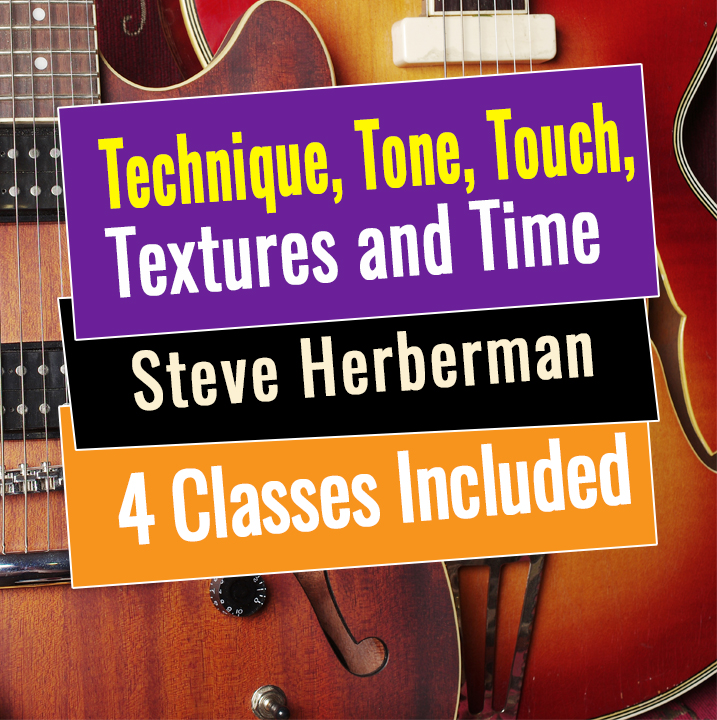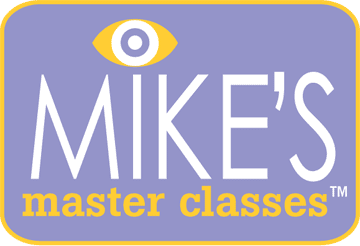Description
Series Includes:
Odd Meters Class Content | Steve Herberman
Although utilized for many years in jazz and other styles, odd meters has become an essential part of today’s jazz. The uses of odd meters are many: As a phrasing device enabling a player to solo and comp over the bar line in 4/4 time. As an effect to utilize in one’s original compositions and to create fresh arrangements of standards and much more!
Once the 5/4 and 7/4 common rhythmic patterns are examined and practiced, soloing and comping can feel as natural as it does in 4/4.
In this masterclass we’ll be looking at the many useful rhythmic patterns in odd meters and applying them to 4/4 tunes as well as standards arranged in 5/4 and 7/4. Pairing these rhythmic concepts with melodic/harmonic concepts will be stressed to enable the musician to more rapidly integrate odd meters on their instrument. An example of this would be arpeggiating diatonic 9th chords in an even stream of 8th notes. The 9th chords contain 5 notes that will give a 5/8 phrasing to the line. Take one triad and its neighboring diatonic7th chord and you have 7 notes that will yield 7/8 phrasing. This is one of many exercises that will be in the written examples accompanying the class. Other examples will include:
Applying odd meters to solo guitar, arranging standards in odd meter, pattern picking odd meters, comping and soloing with odd meters and more.
Take your playing into the future with rhythmic assuredness and confidence!
View clip from this class
| Odd Meters | |||
| Odd Meters | 01:36:00 | ||
Electric Fingerstyle Guitar Class Content | Steve Herberman
Playing fingerstyle on an electric guitar or steel string acoustic can be a very different experience than on a classical guitar. If you use nails you need to keep them in prime condition and steel strings can sure be tough on nails! In this class I’ll demonstrate which techniques have personally worked for me though years of experimentation in various playing situations. The material presented is also applicable to acoustic steel string guitarists and the jazz nylon string player.
For most guitarists playing single note lines on an electric is frustrating because it’s hard to equal the tone, conviction and swing of an expertly flat-picked line. But it can be done and can often give a fuller sound than a flatpick possibly with more tonal variation and nuances. The class will address many issues: principals in achieving a full sound before plugging into an amp, ideal free stroke angles, muting techniques, all things nail; nail lengths, nail shapes, filing etc, left hand slurs, right hand one finger sweeps, discussion of string gauges and types, alternating index and middle, alternating index and ring, using the same finger to play 2 and 3 consecutive notes between slurs, pattern picking, and more. Written examples accompany the video that further clarify the right hand fingerstyle picking techniques applied to distinct musical phrases. In the examples the left hand notation is also given to show the optimal positions that make the lines swing, project and yield a horn-like phrasing and articulation that can only occur when both hands are in sync and balanced. Fingerstyle guitar can add another dimension to your electric playing by expanding the variety of textures and adding counterpoint much more easily. Join me for a fun and informative class on fingerstyle electric guitar techniques.
View clips from this class.
| Electric Fingerstyle Guitar | |||
| Electric Fingerstyle Guitar | 01:27:00 | ||
Open String Voicings for Guitar Class Content | Steve Herberman
Using chord voicings that feature open strings can help create a rich and complex atmosphere for comping, chord-melody playing and soloing. They are a perfect way to enhance a composition with textural nuance and are adaptable to fit any style of music.
While many guitarists know a handful of useful open string voicings there always seems to be new ones waiting to be discovered. This unique class deals with the principles and theory involved with building these voicings, using them in a standard progression (ii-v-iii-vi) with chord substitutions in all major and minor keys. Most every chord quality is addressed with hundreds of useful voicings shown in progressions in all 12 keys as well as several sample sheets devoted to inversions of specific chords. Moveable diminished/dominant seventh voicings using open strings are shown alongside specific chord shapes that work for each of the three diminished families.
This class comes with 12 pages of written material that feature rich, open string voicings often with clusters imbedded in the chords. Everything from big, expansive chords to smaller voicing types. Though the emphasis is on larger chords with low roots (often useful for solo guitar and comping without a bassist) many inversions are included. The progressions shown exhibit melodic continuity, and where possible, close voice-leading that help the voicings gel as a whole. Each written example is recorded on the video with either an even eighth note feel, swing feel, ballad etc. Every guitarist is sure to benefit from this detailed look at open string voicings.
90 minutes, with written examples notated in chord diagram form for 6 string guitar in standard tuning.
| Open String Voicings for Guitar | |||
| Open String Voicings for Guitar | 01:29:00 | ||
Double Stops for Jazz Guitar Class Content | Steve Herberman
Single note lines can be given greater depth by using two notes played simultaneously in a variety of interval combinations. These harmonic intervals that can be mixed and matched implying harmony with just two notes weaving in and out of chords and single note lines for interesting textural changes.
Guitarists such as Ed Bickert, Barney Kessel, Johnny Smith and Howard Roberts are just a few who have used double stops extensively in their playing.
The class is divided into two sections:
Part 1, harmonic scale studies (of every interval smaller than an octave) including 10th intervals, a veritable pillar of harmony. Both major and melodic minor scales are shown for each interval. The studies are logically laid out on the fingerboard for ease of memorization and use.
Part 2, II-V-I and minor II-V-I lines in every interval (octaves and smaller.) The lines are great for helping to build a jazz vocabulary and employ good finger mechanics. (Alternating pairs of fingers are used whenever possible.) The 62 separate II-V-I examples (in TAB and standard notation) are in a variety of keys and registers and are a good mixture of scalar and arpeggiated lines. The lines are between two to four bars long, ideal for alternating with phrases of single notes and chords.
Wherever possible an explanation of the lines are given with discussion about chord scales, neighbor tones, and altered sounds over dominant seventh chords.
If you are in a rut using the same kinds of double stop patterns than this class will help give you some new direction and awaken both your fingers and mind with refreshing possibilities.
Prepare for a fun journey with special sounds that reside between single note lines and chords!
Approximately 90 minutes with over 20 pages of written materials in TAB and standard notation.
View a clip from this class
| Double Stops for Jazz Guitar | |||
| Double Stops for Jazz Guitar | 01:27:00 | ||



Reviews
There are no reviews yet.